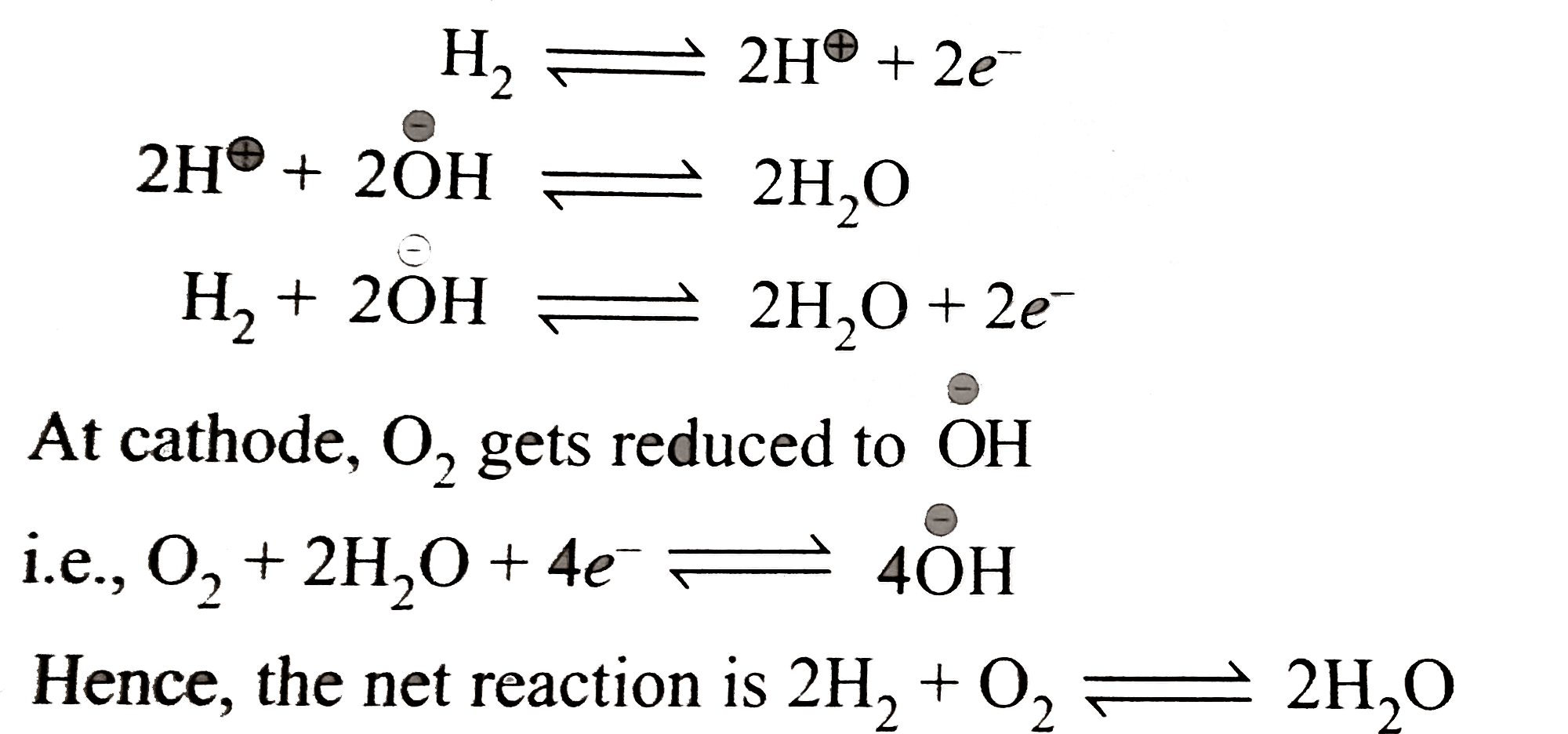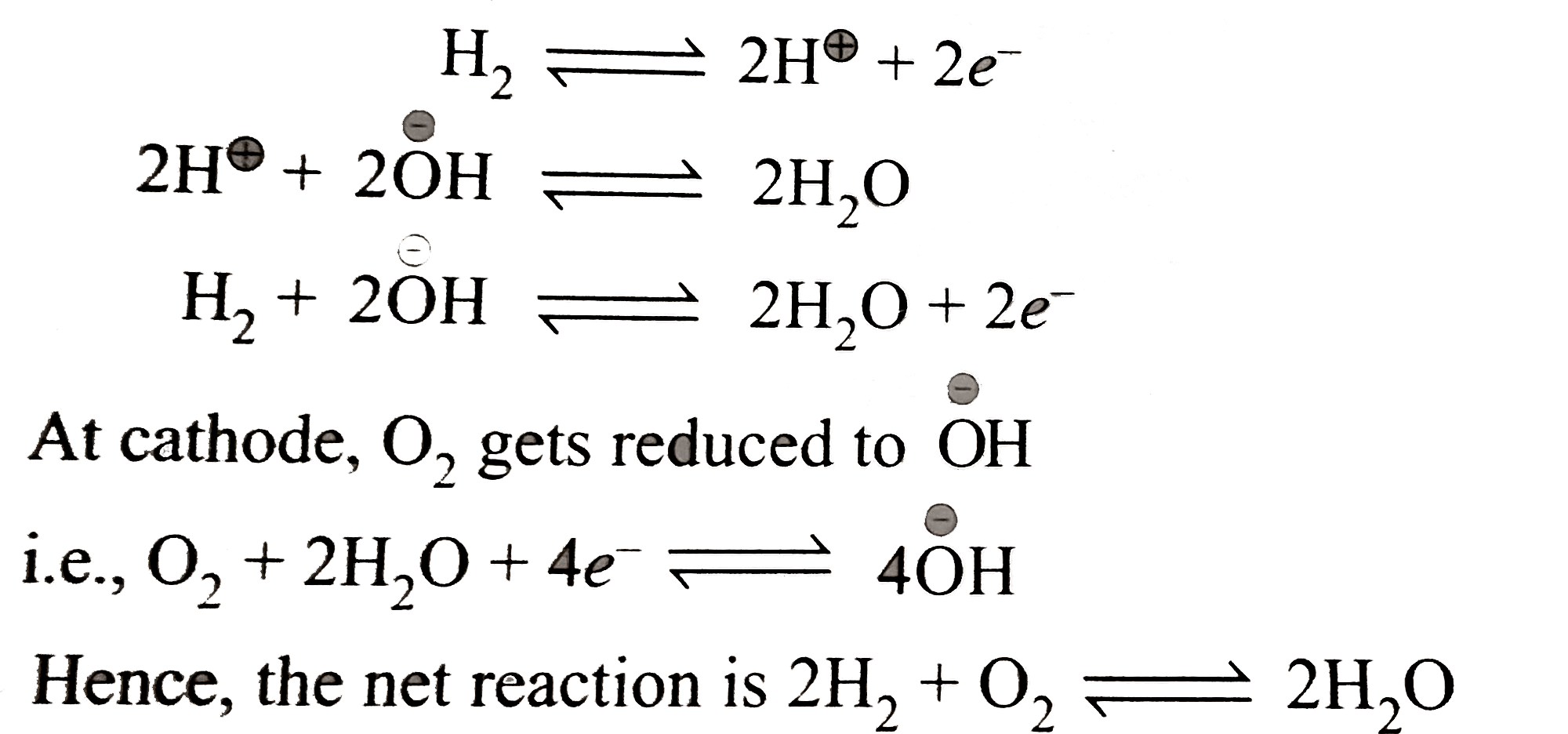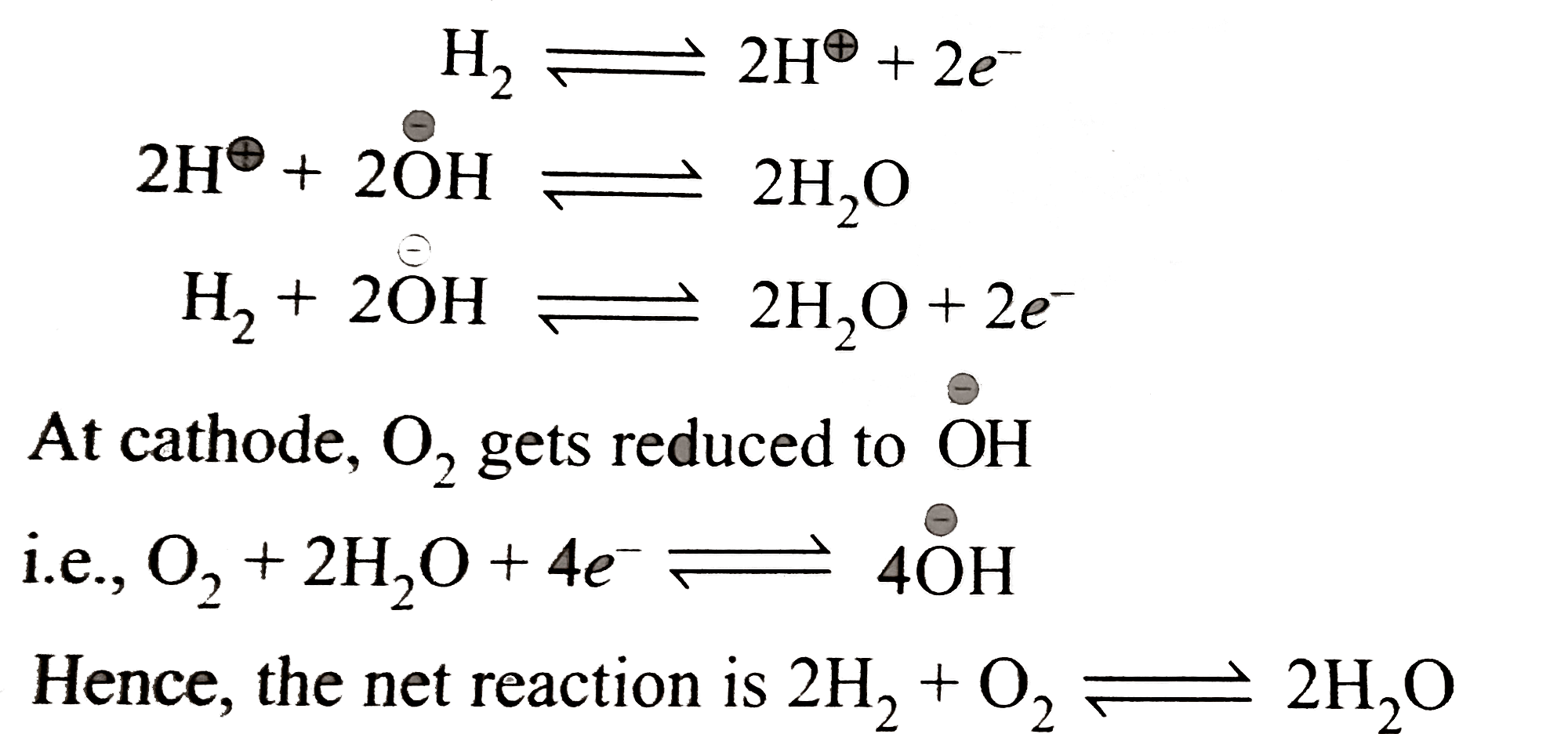In a hydrogen-oxygen fuel cell, combustion of hydrogen occurs to :
generate heat
remove absorbed oxygen from electrode surfaces
produce high purity water
create potential difference between the two electrodes
The correct Answer is:D
Step by step video, text & image solution for In a hydrogen-oxygen fuel cell, combustion of hydrogen occurs to : by Chemistry experts to help you in doubts & scoring excellent marks in Class 12 exams.
Updated on:21/07/2023Topper's Solved these Questions
- ELECTRO CHEMISTRYBook:NARAYNAChapter: ELECTRO CHEMISTRYExercise:LEVEL-III
Explore 57 Videos
- ELECTRO CHEMISTRYBook:NARAYNAChapter: ELECTRO CHEMISTRYExercise:AIEEE & JEE MAIN PREVIOUS
Explore 38 Videos
- ELECTRO CHEMISTRYBook:NARAYNAChapter: ELECTRO CHEMISTRYExercise:LEVEL-I(C.W)
Explore 47 Videos
- 15TH GROUP ELEMENTSBook:NARAYNAChapter:15TH GROUP ELEMENTSExercise:EXERCISE - 4 (NCERT EXEMPLERS/HOTs)
Explore 27 Videos
Similar Questions
Knowledge Check
In a hydrogen oxygen uel cell, combustion of hydrogen occurs to
AProduce high purity waterBremove adsorbed oxygen from electrode surfaceCgenerate heatDcreate potential between two electrodesPurpose of hydrogen -oxygen fuel cell is to
AGenerate heatBCcreate potential differenceCProduce high purity waterDRemove adsorbed oxygen from electrode surfaceIn a hydrogen-oxygen fuel cell, combustion of hydrogen occurs to :
Aproduces high purity waterBcreates potential difference between the two electrodesCgenerates heatDremoves adsorbed oxygen from electrode surfaces
In H2−O2 fuel cell , combustion of H2 occurs to
View SolutionA hydrogen fuel cell uses hydrogen and
View SolutionFuel cells : Fuel cells are galvanic cells in which the chemical energy of fuel cell is directly converted into electrical energy. A type of fuel cell is a hydrogen − oxygen fuel cell. It consists of two electrodes made up of two porous graphite impregnated with a catalyst ( platinum, silver, or metal oxide ). The electrodes are placed in aqueous solution of NaOH . Oxygen and hydrogen are continuously fed into the cell. Hydrogen gets oxidized to H⊕ which is neutralized by c−OH,i.e., anodic reaction.

At cathode, O2 gets reduced to c−OH

Hence, the net reaction is
The overall reaction has
ΔH=−285.6kJmol−1 and ΔG=−237.4kJmol−1 at 25∘C
If the cell voltage is 1.23V for the H2−O2 fuel cell and for the half cell :
View SolutionFuel cells : Fuel cells are galvanic cells in which the chemical energy of fuel cell is directly converted into electrical energy. A type of fuel cell is a hydrogen − oxygen fuel cell. It consists of two electrodes made up of two porous graphite impregnated with a catalyst ( platinum, silver, or metal oxide ). The electrodes are placed in aqueous solution of NaOH . Oxygen and hydrogen are continuously fed into the cell. Hydrogen gets oxidized to H⊕ which is neutralized by c−OH,i.e., anodic reaction.

At cathode, O2 gets reduced to c−OH
Hence, the net reaction is
The overall reaction has
ΔH=−285.6kJmol−1 and ΔG=−237.4kJmol−1 at 25∘C
What is the value of ΔSc− for the fuel cell at 25∘C?
View SolutionFuel cells : Fuel cells are galvanic cells in which the chemical energy of fuel cell is directly converted into electrical energy. A type of fuel cell is a hydrogen − oxygen fuel cell. It consists of two electrodes made up of two porous graphite impregnated with a catalyst ( platinum, silver, or metal oxide ). The electrodes are placed in aqueous solution of NaOH . Oxygen and hydrogen are continuously fed into the cell. Hydrogen gets oxidized to H⊕ which is neutralized by c−OH,i.e., anodic reaction.

At cathode, O2 gets reduced to c−OH
Hence, the net reaction is
The overall reaction has
ΔH=−285.6kJmol−1 and ΔG=−237.4kJmol−1 at 25∘C
Suppose the concentration of hydroxide ioin in the cell is doubled, then the cell voltage will be
View Solution

